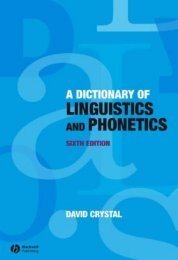url?sa=t&source=web&cd=3&ved=0CC0QFjAC&url=http://www.teachingenglish.org.uk/sites/teacheng/files/B369-Young-Learners-Activity-Book_v10
url?sa=t&source=web&cd=3&ved=0CC0QFjAC&url=http://www.teachingenglish.org.uk/sites/teacheng/files/B369-Young-Learners-Activity-Book_v10
url?sa=t&source=web&cd=3&ved=0CC0QFjAC&url=http://www.teachingenglish.org.uk/sites/teacheng/files/B369-Young-Learners-Activity-Book_v10
Create successful ePaper yourself
Turn your PDF publications into a flip-book with our unique Google optimized e-Paper software.
TeachingEnglish <strong>Young</strong> <strong>Learners</strong> <strong>Activity</strong> <strong>Book</strong><br />
Activities<br />
<strong>Activity</strong> 32: Storybook predictions<br />
Nick Shekkeris – Cyprus<br />
Age: 7–12<br />
About 30 minutes Large classes? Yes Mixed level? Yes<br />
Materials: A story book and a piece of paper and pen/pencil for each child.<br />
Organisation: Whole class.<br />
Aim: To practise listening skills, especially prediction.<br />
Description: Children work alone. They listen to the story and respond to questions the teacher<br />
asks about the story by writing or drawing on the paper.<br />
Preparation: You will need a piece of paper for each child. You will need to decide where you<br />
are going to stop reading in the story so that children can make their predictions.<br />
Procedure<br />
1. Give each child a piece of paper (A4 size is ideal). Ask the children to divide it into<br />
four squares (by folding or by drawing lines).<br />
2. Tell the children they are going to listen to a story and that they must guess what<br />
happens next at different points. Give an example.<br />
3. Pick up the story book and start to read. About a quarter of the way through, stop reading<br />
and ask the children to write down in the first square what happens next. For example, if the<br />
story is Goldilocks and the Three Bears, you could say, ‘Goldilocks walked into the forest and<br />
then she saw a ______. The children write down what they think Goldilocks saw. You can<br />
help the children by going back and reading sections that might help the children to guess.<br />
4. When all the children have written something, ask them for their suggestions. At this point it<br />
is important to praise the children for their ideas – after all, they do not know the story so all<br />
reasonable guesses are acceptable.<br />
5. After discussing the children’s guesses go back to the story and read the complete<br />
sentence. Ask the children questions about the right answer; for example, ask, ‘who do<br />
you think lives in the house?<br />
6. Continue with the story and half way, three quarters of the way and towards the end,<br />
repeat the procedure.<br />
7. Finish by asking children what they think of the story and if they were surprised by<br />
anything in it.<br />
Notes<br />
Do not worry too much about the children speaking in English in this activity. The main purpose<br />
is for them to listen to a story in English and to learn that prediction can be helpful in helping<br />
them to understand. For many children, it will be too difficult for them to express their own<br />
predictions in English, so using the first language is absolutely fine.<br />
70<br />
© British Council 2012





